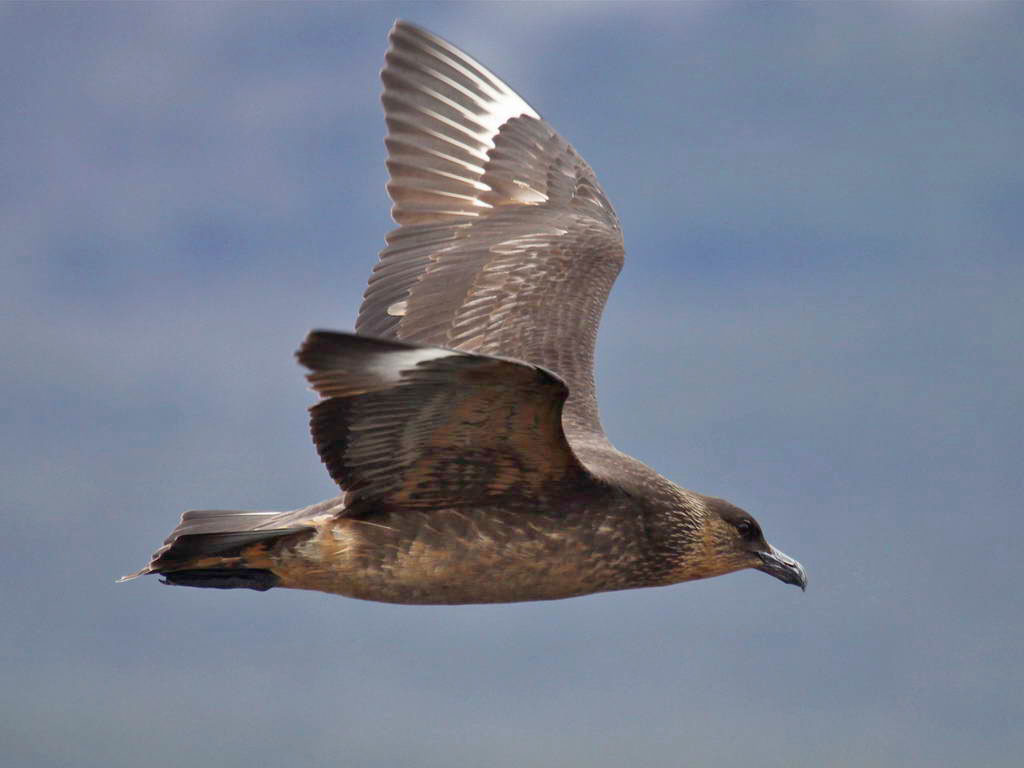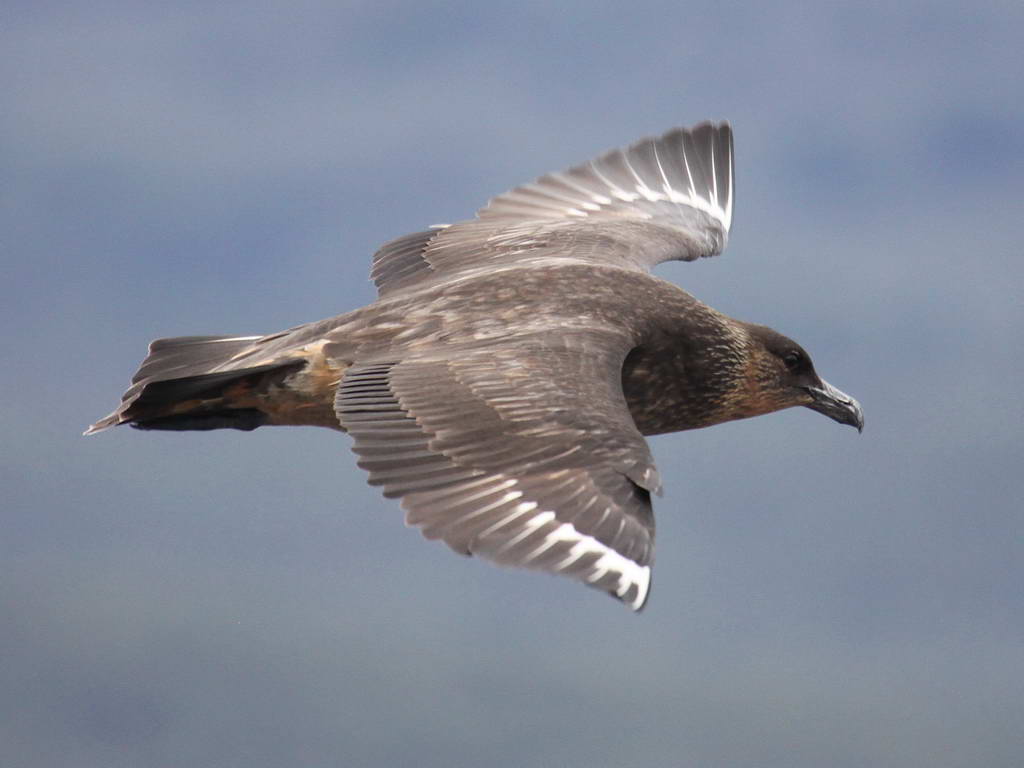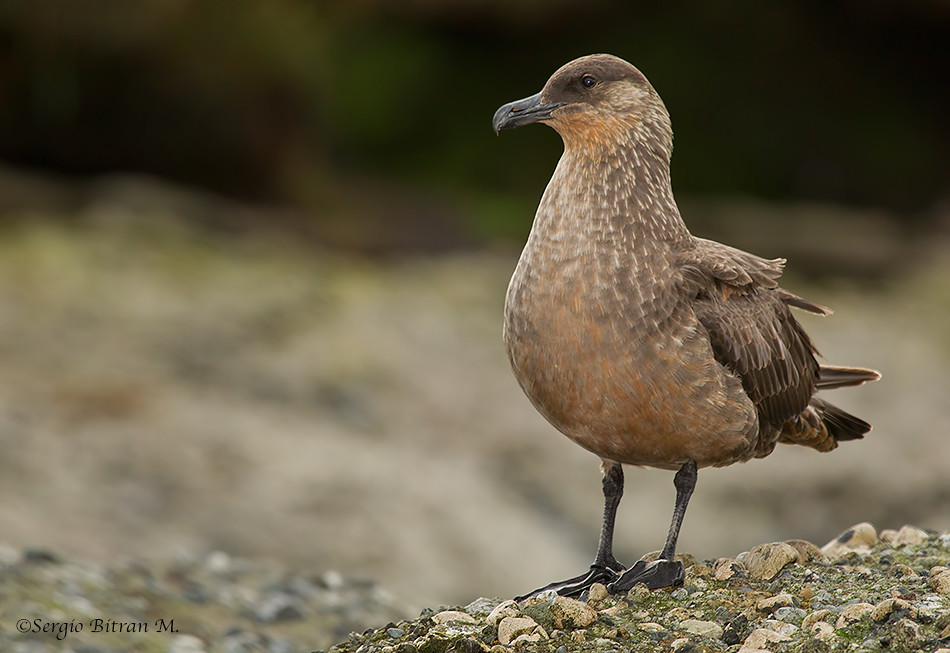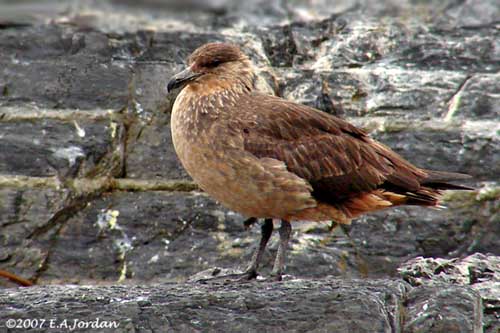Chilean Skua
Chileskua ( Stercorarius chilensis )
The Chileskua ( Stercorarius chilensis, synonym: Catharacta chilensis ) is a species of bird in the family of skuas ( Stercorariidae ). It inhabits the coasts of southern South America from south-central Chile ( Concepción ) and southern Argentina ( Departamento Deseado ) to the southern Tierra del Fuego.
Features
The Chileskua reached a size 53-58 cm, a weight of 1100-1700 grams and a wingspan of 130-138 centimeters. The back plumage is brown, the underside is bright cinnamon. The small and medium coverts cinnamon are also luminous. Birds of all ages have a dark brown to black hood, which extends to just behind the eyes. In adult birds the color contrasts strongly with a straw-colored dotted collar and the ear-coverts the same color. Unlike other skua species, which have black beaks, the beak of this kind is light blue with a dark tip. The cinnamon underside is especially accentuated in the juvenile birds. The immature birds it is already dark. The juvenile birds the straw-colored dash is barely visible. Unique for a Raubmöwenart are the seagulls similar strong edged or banded feathers on the backs of juvenile birds.
Habitat
The Chileskua inhabited marine habitats, mainly coastal waters, where they can be observed particularly in straits and channels. It breeds on islands and uninhabited stretches of coastline in Chile and Argentina.
Way of life
The behavior when foraging is largely unexplored. The type besieged bird colonies and steals the eggs and chicks or she plunders the garbage dumps in Patagonia. In the intertidal zone they attack kelp gulls (Larus dominicanus ). The Chileskua breeds in dense gull -like colonies. The nest is scraped into the ground and usually lined with dead grass. The clutch consists of two eggs, but occasionally only one egg. The chick has monochromatic light pink - gray - brown down. Unlike other skuas species Chileskua people is not aggressive towards.
Hiking
Little is known about the migratory paths. Apparently the type wintered in April northward along the coasts of Argentina, the Falkland Islands and Chile to the northern and southern Peru and returns in October back to their breeding areas.
Status
The IUCN classifies the Chileskua in the category " not at risk " ( least concern ) a. The population size is unknown, but is estimated at several thousand pairs. The population dynamics and changes in the size of the breeding areas are poorly understood. Hazards are not known, but it is possible that eggs and chicks are collected by people.





.jpg/220px-Catharacta_chilensis_(Chilean_Skua).jpg)
.jpg)



